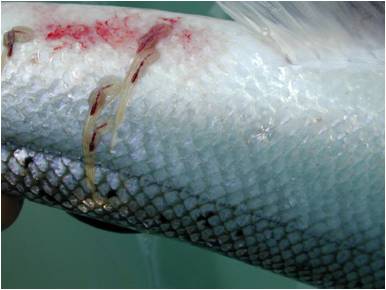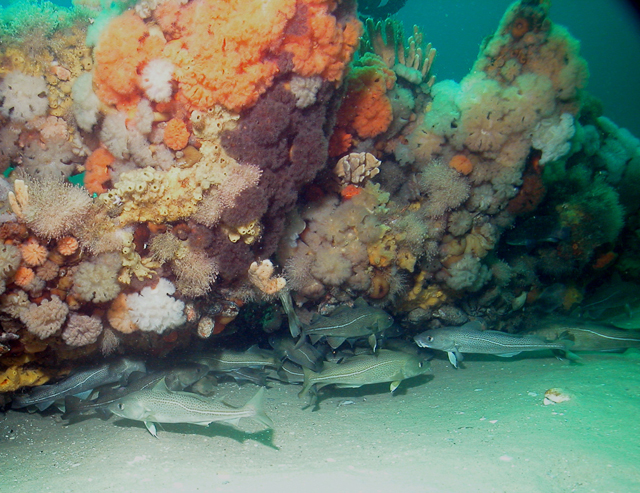|
Caligus Curtus
''Caligus curtus'' is a sea louse species. It is a parasite of the Atlantic cod. References Siphonostomatoida Crustaceans of the Atlantic Ocean Parasitic crustaceans Animal parasites of fish Crustaceans described in 1785 Taxa named by Otto Friedrich Müller {{copepod-stub ... [...More Info...] [...Related Items...] OR: [Wikipedia] [Google] [Baidu] |
Otto Friedrich Müller
Otto Friedrich Müller, also known as Otto Friedrich Mueller (2 November 1730 – 26 December 1784) was a Danish naturalist and scientific illustrator. Biography Müller was born in Copenhagen. He was educated for the church, became tutor to a young nobleman, and after several years' travel with him, settled in Copenhagen in 1767, and married a lady of wealth. His first important works, ''Fauna Insectorum Friedrichsdaliana'' (Leipzig, 1764), and ''Flora Friedrichsdaliana'' (Strasbourg, 1767), giving accounts of the insects and flora of the estate of Frederiksdal, near Copenhagen, recommended him to Frederick V of Denmark, by whom he was employed to continue the ''Flora Danica'' a comprehensive atlas of the flora of Denmark. Müller added two volumes to the three published by Georg Christian Oeder since 1761. The study of invertebrates began to occupy his attention almost exclusively, and in 1771 he produced a work in German on “Certain Worms inhabiting Fresh and Salt Water,� ... [...More Info...] [...Related Items...] OR: [Wikipedia] [Google] [Baidu] |
Sea Louse
Sea lice (singular: sea louse) are copepods (small crustaceans) of the family Caligidae within the order Siphonostomatoida. They are marine ectoparasites (external parasites) that feed on the mucus, epidermal tissue, and blood of host fish. The roughly 559 species in 37 genera include around 162 ''Lepeophtheirus'' and 268 ''Caligus'' species. The genera ''Lepeophtheirus'' and ''Caligus'' parasitize marine fish, in particular those species that have been recorded on farmed salmon. ''Lepeophtheirus salmonis'' and various ''Caligus'' species are adapted to salt water and are major ectoparasites of farmed and wild Atlantic salmon. Several antiparasitic drugs have been developed for control purposes. ''L. salmonis'' is the best understood in the areas of its biology and interactions with its salmon host. ''Caligus rogercresseyi'' has become a major parasite of concern on salmon farms in Chile. Studies are under way to gain a better understanding of the parasite and the host-parasit ... [...More Info...] [...Related Items...] OR: [Wikipedia] [Google] [Baidu] |
Atlantic Cod
The Atlantic cod (''Gadus morhua'') is a benthopelagic fish of the family Gadidae, widely consumed by humans. It is also commercially known as cod or codling.''Atlantic Cod'' . Seafood Portal. Dry cod may be prepared as unsalted stockfish,''Oxford English Dictionary'', 3rd ed. "milwell, ''n.''" Oxford University Press (Oxford), 2002.''Oxford English Dictionary'', 1st ed. "stock-fish , 'stockfish, ''n.''" Oxford University Press (Oxford), 1917. and as cured |
Parasites & Vectors
''Parasites & Vectors'' is a peer-reviewed open-access medical journal published by BioMed Central. The journal publishes articles on the biology of parasites, parasitic diseases, intermediate hosts, vectors and vector-borne pathogens. ''Parasites & Vector'' was established in 2008 as a merger of ''Filaria Journal'' and ''Kinetoplastid Biology,'' and its launch editor-in-chief was Chris Arme. Since 2013 it has published an associated blog for the parasites and vectors community called BugBitten, and it awards the 'Odile Bain Memorial Prize' (OBMP) to perpetuate the memory of the parasitologist Parasitology is the study of parasites, their hosts, and the relationship between them. As a biological discipline, the scope of parasitology is not determined by the organism or environment in question but by their way of life. This means it f ... Odile Bain who died in 2012. References External links * {{DEFAULTSORT:Parasites and Vectors BioMed Central academic journals Biol ... [...More Info...] [...Related Items...] OR: [Wikipedia] [Google] [Baidu] |
Siphonostomatoida
Siphonostomatoida is an order of copepods, containing around 75% of all the copepods that parasitise fishes. Their success has been linked to their possession of siphon-like mandibles and of a "frontal filament" to aid attachment to their hosts. Most are marine, but a few live in fresh water. There are 40 recognised families: * Archidactylinidae Izawa, 1996 *Artotrogidae Brady, 1880 *Asterocheridae Giesbrecht, 1899 *Brychiopontiidae Humes, 1974 *Caligidae Burmeister, 1835 * Calverocheridae Stock, 1968 *Cancerillidae Giesbrecht, 1897 *Codobidae Boxshall & Ohtsuka, 2001 *Coralliomyzontidae Humes & Stock, 1991 * Dichelesthiidae Milne-Edwards, 1840 *Dichelinidae Boxshall & Ohtsuka, 2001 *Dinopontiidae Murnane, 1967 *Dirivultidae Humes & Dojiri, 1980 *Dissonidae Yamaguti, 1963 *Ecbathyriontidae Humes, 1987 *Entomolepididae Brady, 1899 *Eudactylinidae C. B. Wilson, 1932 * Hatschekiidae Kabata, 1979 * Hyponeoidae Heegaard, 1962 * Kroyeriidae Kabata, 1979 * Lernaeopodidae Milne-Edwards, ... [...More Info...] [...Related Items...] OR: [Wikipedia] [Google] [Baidu] |
Crustaceans Of The Atlantic Ocean
Crustaceans (Crustacea, ) form a large, diverse arthropod taxon which includes such animals as decapods, seed shrimp, branchiopods, fish lice, krill, remipedes, isopods, barnacles, copepods, amphipods and mantis shrimp. The crustacean group can be treated as a subphylum under the clade Mandibulata. It is now well accepted that the hexapods emerged deep in the Crustacean group, with the completed group referred to as Pancrustacea. Some crustaceans (Remipedia, Cephalocarida, Branchiopoda) are more closely related to insects and the other hexapods than they are to certain other crustaceans. The 67,000 described species range in size from '' Stygotantulus stocki'' at , to the Japanese spider crab with a leg span of up to and a mass of . Like other arthropods, crustaceans have an exoskeleton, which they moult to grow. They are distinguished from other groups of arthropods, such as insects, myriapods and chelicerates, by the possession of biramous (two-parted) limbs, and by their ... [...More Info...] [...Related Items...] OR: [Wikipedia] [Google] [Baidu] |
Parasitic Crustaceans
Parasitism is a close relationship between species, where one organism, the parasite, lives on or inside another organism, the host, causing it some harm, and is adapted structurally to this way of life. The entomologist E. O. Wilson has characterised parasites as "predators that eat prey in units of less than one". Parasites include single-celled protozoans such as the agents of malaria, sleeping sickness, and amoebic dysentery; animals such as hookworms, lice, mosquitoes, and vampire bats; fungi such as honey fungus and the agents of ringworm; and plants such as mistletoe, dodder, and the broomrapes. There are six major parasitic strategies of exploitation of animal hosts, namely parasitic castration, directly transmitted parasitism (by contact), trophicallytransmitted parasitism (by being eaten), vector-transmitted parasitism, parasitoidism, and micropredation. One major axis of classification concerns invasiveness: an endoparasite lives inside the host's body; an ect ... [...More Info...] [...Related Items...] OR: [Wikipedia] [Google] [Baidu] |
Animal Parasites Of Fish
Animals are multicellular, eukaryotic organisms in the biological kingdom Animalia. With few exceptions, animals consume organic material, breathe oxygen, are able to move, can reproduce sexually, and go through an ontogenetic stage in which their body consists of a hollow sphere of cells, the blastula, during embryonic development. Over 1.5 million living animal species have been described—of which around 1 million are insects—but it has been estimated there are over 7 million animal species in total. Animals range in length from to . They have complex interactions with each other and their environments, forming intricate food webs. The scientific study of animals is known as zoology. Most living animal species are in Bilateria, a clade whose members have a bilaterally symmetric body plan. The Bilateria include the protostomes, containing animals such as nematodes, arthropods, flatworms, annelids and molluscs, and the deuterostomes, containing the echinoderms an ... [...More Info...] [...Related Items...] OR: [Wikipedia] [Google] [Baidu] |
Crustaceans Described In 1785
Crustaceans (Crustacea, ) form a large, diverse arthropod taxon which includes such animals as decapods, seed shrimp, branchiopods, fish lice, krill, remipedes, isopods, barnacles, copepods, amphipods and mantis shrimp. The crustacean group can be treated as a subphylum under the clade Mandibulata. It is now well accepted that the hexapods emerged deep in the Crustacean group, with the completed group referred to as Pancrustacea. Some crustaceans ( Remipedia, Cephalocarida, Branchiopoda) are more closely related to insects and the other hexapods than they are to certain other crustaceans. The 67,000 described species range in size from '' Stygotantulus stocki'' at , to the Japanese spider crab with a leg span of up to and a mass of . Like other arthropods, crustaceans have an exoskeleton, which they moult to grow. They are distinguished from other groups of arthropods, such as insects, myriapods and chelicerates, by the possession of biramous (two-parted) limbs, and ... [...More Info...] [...Related Items...] OR: [Wikipedia] [Google] [Baidu] |





